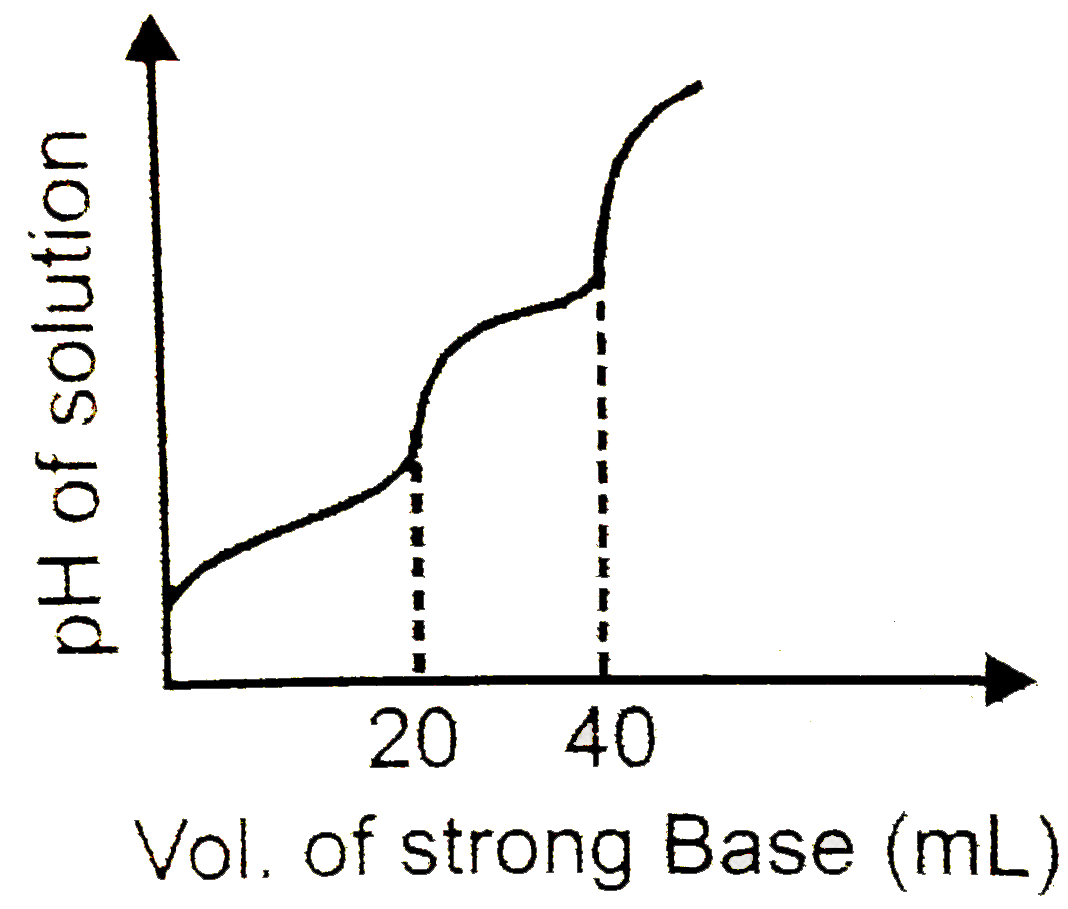pH of some solution is given by pH=pKa1+pKa22. This formula is valid for the compound NaH2BO3.
To determine whether the statement about the pH of the solution given by the formula pH=(pKa1+pKa2)2 is valid for the compound NaH2BO3, we can follow these steps:
Step 1: Understand the Compound
- Identify the nature of NaH2BO3: This compound is sodium borate, which is derived from boric acid H3BO3.
Step 2: Dissociation in Water
- Dissociation Reaction: When NaH2BO3 is dissolved in water, it dissociates into Na+ ions and H2BO−3 ions. The reaction can be represented as:
NaH2BO3→Na++H2BO−3
Step 3: Analyze the Nature of the Ion
- Weak Acid Behavior: The H2BO−3 ion can act as a weak acid. It can donate a proton to form H3BO3 and OH− ions:
H2BO−3⇌H3BO3+OH−
- Basic Salt: Since the dissociation produces OH− ions, it indicates that the solution is basic in nature.
Step 4: pH Calculation Validity
- Validity of the Formula: The formula pH=(pKa1+pKa2)2 is typically valid for acidic salts, where the salt can donate protons. Since NaH2BO3 behaves as a basic salt, the formula does not hold true.
Conclusion
- Final Answer: The statement is false because NaH2BO3 is a basic salt, and the formula for calculating pH using the average of two pKa values is not applicable.
---
- Identify the nature of NaH2BO3: This compound is sodium borate, which is derived from boric acid H3BO3.
- Dissociation Reaction: When NaH2BO3 is dissolved in water, it dissociates into Na+ ions and H2BO−3 ions. The reaction can be represented as:
NaH2BO3→Na++H2BO−3
- Weak Acid Behavior: The H2BO−3 ion can act as a weak acid. It can donate a proton to form H3BO3 and OH− ions:
H2BO−3⇌H3BO3+OH−
- Basic Salt: Since the dissociation produces OH− ions, it indicates that the solution is basic in nature.
- Validity of the Formula: The formula pH=(pKa1+pKa2)2 is typically valid for acidic salts, where the salt can donate protons. Since NaH2BO3 behaves as a basic salt, the formula does not hold true.
- Final Answer: The statement is false because NaH2BO3 is a basic salt, and the formula for calculating pH using the average of two pKa values is not applicable.
Topper's Solved these Questions
- IONIC EQUILIBRIUMBOOK - CENGAGE CHEMISTRY ENGLISHCHAPTER - IONIC EQUILIBRIUMEXERCISE - Archives Multiple Correct
3 Videos
- IONIC EQUILIBRIUMBOOK - CENGAGE CHEMISTRY ENGLISHCHAPTER - IONIC EQUILIBRIUMEXERCISE - Archives Single Correct
25 Videos
- IONIC EQUILIBRIUMBOOK - CENGAGE CHEMISTRY ENGLISHCHAPTER - IONIC EQUILIBRIUMEXERCISE - Exercises Integer
10 Videos
- HYDROGEN, WATER AND HYDROGEN PEROXIDEBOOK - CENGAGE CHEMISTRY ENGLISHCHAPTER - HYDROGEN, WATER AND HYDROGEN PEROXIDEEXERCISE - Subjective Archive (Subjective)
3 Videos
- ISOMERISMBOOK - CENGAGE CHEMISTRY ENGLISHCHAPTER - ISOMERISMEXERCISE - Assertion-Reasoning Type
1 Videos
Similar Questions
pOH of a 0.004Maqueous solution of diacidic weak base B(pKb1=3.7&pKb2=7.3) is:
View SolutionThe pH of 1 M PO3−4(aq) solution (given pKb of PO3−4=2) is
View SolutionpH of a salt solution of weak acid (pKa=4) & weak base
(pKb=5) at 25∘C is :
View SolutionCalculate solubility of MnS in a buffer solution of given pH.Ksp of MnS and Ka1&Ka2 for H2S are given .
View SolutionHigher the amount of acid or base used to produce a definite change of pH in a buffer solution,higher will be its buffer capacity. Buffer capacity of solution is maximum under the following conditions:
[Salt]= [Acid] (in acid buffer), [Salt] = [Base] (in base buffer) pH of a buffer solution lies in the range given below: pH = pKa±1,
In other words, any buffer solution can be used as buffer up to two pH units only, depending upon the value of pKa, or pKb,. A buffer is said to be efficient when pH=pKa, or pOH= pKb
The bulfer capacity is equal to :
View SolutionpH of 0.01 M aq. solution of HA is 4. Find the value of pKa of HA at 25∘C.
View SolutionThe pH of basic buffer mixtures is given by : pH=pKa+log([Base][Salt]) , whereas pH of acidic buffer mixtures is given by: pH=pKa+log([Salt][Acid]). Addition of little acid or base although shows no appreciable change for all practical purpose, but since the ratio [Base][Salt] or [Salt][Acid] change, a slight decrease or increase in pH results in.
A solution containing 0.2 mole of dichloroacetic acid (Ka=5×10−2) and 0.1 mole sodium dichloroacetate in one litre solution has [H+] :
View SolutionCalcuate the pOH of 0.74g/L aqueous solution of propane -1,2-diamine .Given :pKb1&pKb2 for base is 4.18&7.39 respectively.
View SolutionProve that the dergee of dissociation of weak acid is given by:
α=11+10pKa−pH
where Ka is its dissociation constant of the weak acid.
View Solution10 mL of H2A(weak diprotic acid) solution is titrated against 0.1M NaOH. pH of the solution is plotted against volume of strong base added and following observation is made. If pH of the solution at first equivalence point is pH1 and at second equivalence point is pH2. Calculate the value of (pH2−pH1) at 25∘C
Given for H2A,pKa1 =4.6 and pKa2 =8, log 25=1.4
View Solution
